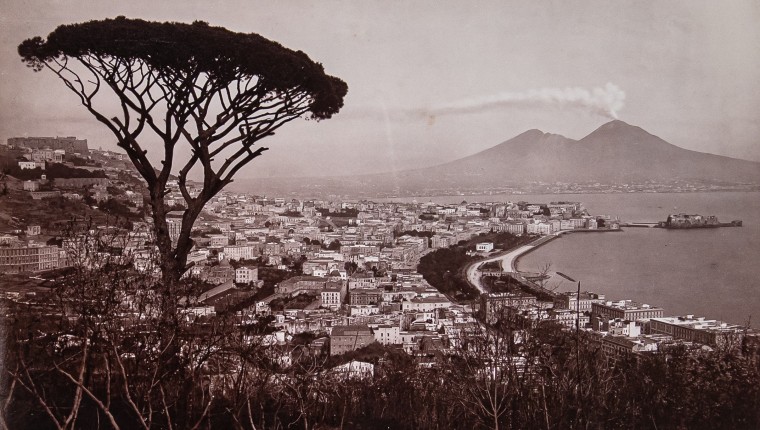By Robin O’Dell
. . .
Travels in Italy: a 19th-Century
Voyage Through Photography
. . .
Through July 9
Tampa Museum of Art
Details here
. . .
The Tampa Museum of Art (TMA) has over 1300 photographic objects from the 19th century. These make up one of the largest sub-groups of the permanent collection – yet many of these photographs have never been exhibited.
In 2021, I was asked by the TMA Director Michael Tomor if I would propose an exhibition culled from this collection. The majority of these works are formal compositions of ancient sites and antiquities in mostly Greece and Italy, generously donated by William Knight Zewadski, a savvy collector of both ancient art and photography. The photographs dovetail well with TMA’s extensive collection of ancient artworks.
If you aren’t familiar with that collection, the exhibition Life & Death in the Ancient World, Introduction To the Antiquities Collection has also recently opened, making it easy to acquaint yourself.
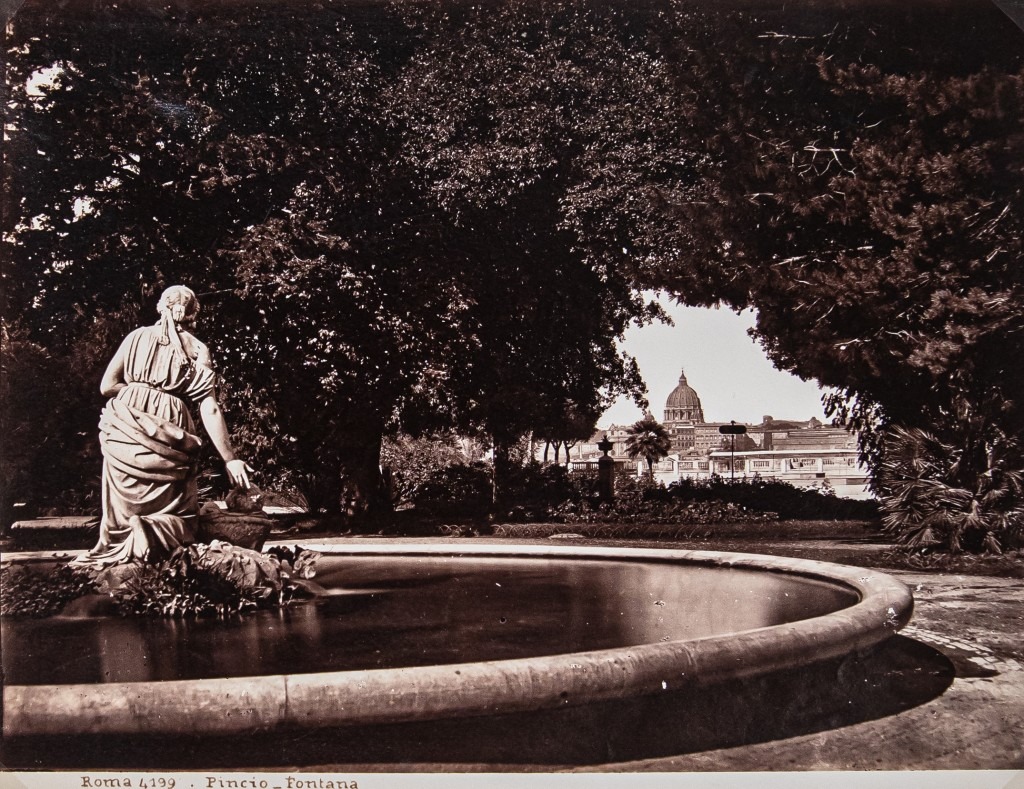
Since the photographs from the 1800s in the TMA’s collection were primarily formal ones marketed to travelers – and there were so many important and dynamic things happening in Italy in the country at that time – I thought it might be interesting to arrange an exhibition around the theme of what it might be like to travel there when photography was brand new in the second half of the 19th century. Travels in Italy is the result.
Since the 17th century there had been the tradition of The Grand Tour, an educational and cultural journey undertaken by young aristocrats and the wealthy to visit the major cultural centers of England, France, Switzerland and Italy. Several historic events happened in the first half of the 19th century to change this tradition and open it up to, while not the average person, at least to the upper middle class. The number of travelers greatly increased and businesses catering to their needs followed.
One major change was that in the 1840s railways were first added. Italy at this time was still divided into separate kingdoms or city-states and prior travel by coaches drawn by horses was slow and costly. Trains vastly shortened the time it took to travel from one city to the next and lessened the cost incurred, making it accessible to more people.
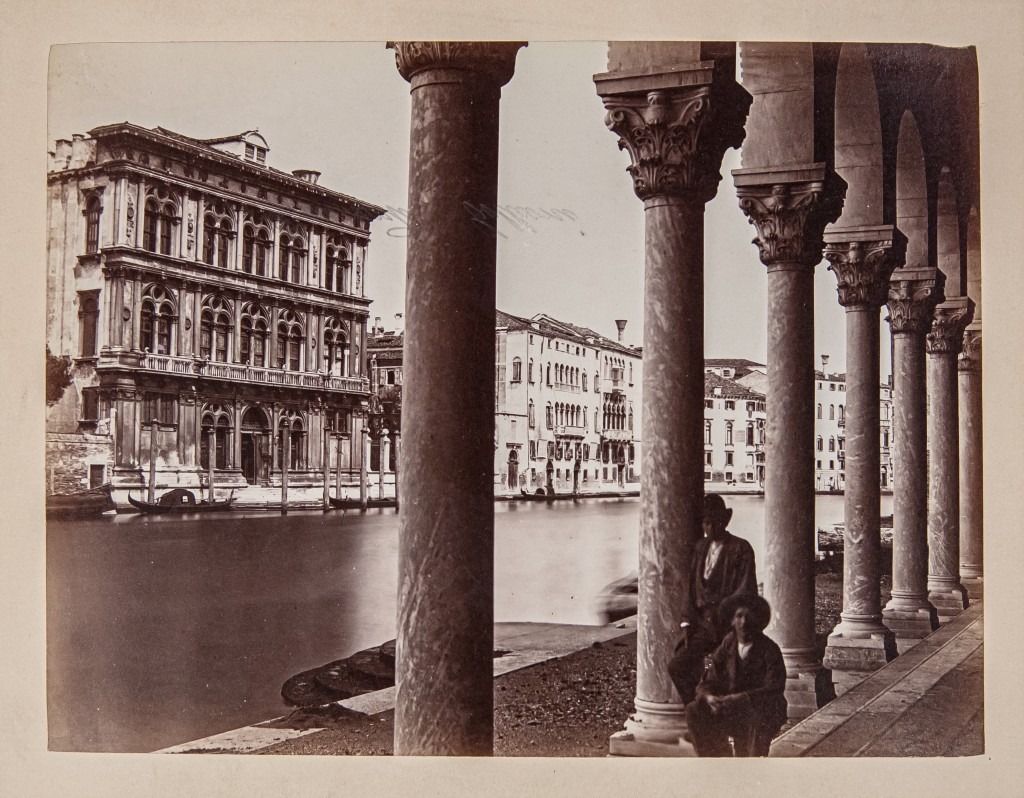
This time period was also when photography was first presented to the world. In 1839, Louis-Jacque-Mandé Daguerre introduced the daguerreotype in France, while Henry Fox Talbot quickly announced his discovery of a paper photograph process shortly thereafter.
These new ways of making images were less expensive and time consuming than painting an image or creating an etching or engraving. Italian artists stepped up to begin making photographs, and newly practicing photographers from England, Scotland and France arrived to set up shops and kiosks offering prints for sale.
In 1861 the unification of Italy into a single Kingdom occurred, largely along the same lines as today. This also helped travelers touring the country as consistent laws, regulations and currencies were implemented.
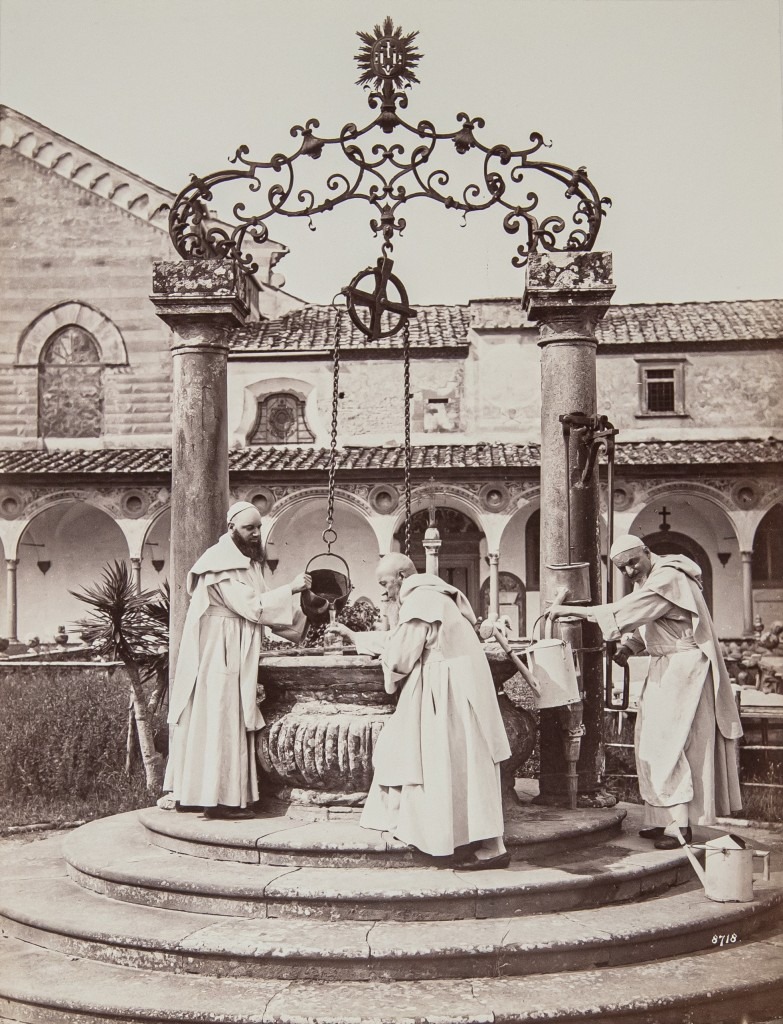
Photographs at this time were created with large cumbersome cameras that required chemicals and precise know-how. There were very few amateurs willing to undertake the trouble. The first “point and shoot” cameras by Kodak weren’t introduced until 1888, and at twenty-five dollars were still a gadget for the wealthy.
Many people purchased generic shots of famous historical sites they had visited or artworks they had seen at the Vatican or other museums. Individual prints were available, and one could order selected photos incorporated into an album. These could conveniently be taken home to enjoy and share with friends and relatives.
Travels in Italy consists of forty-five photographs made for this kind of consumption, arranged by city. There are also two photo albums illustrating how they might have been originally acquired. Two cameras, an AGFA field box camera and a 5 x 7 POCO camera, are presented to give viewers an idea of the complexity of making images at this time.These were generously loaned by Scott and Mary Ann Will and Stanton B. and Nancy W. Kaplan, respectively.
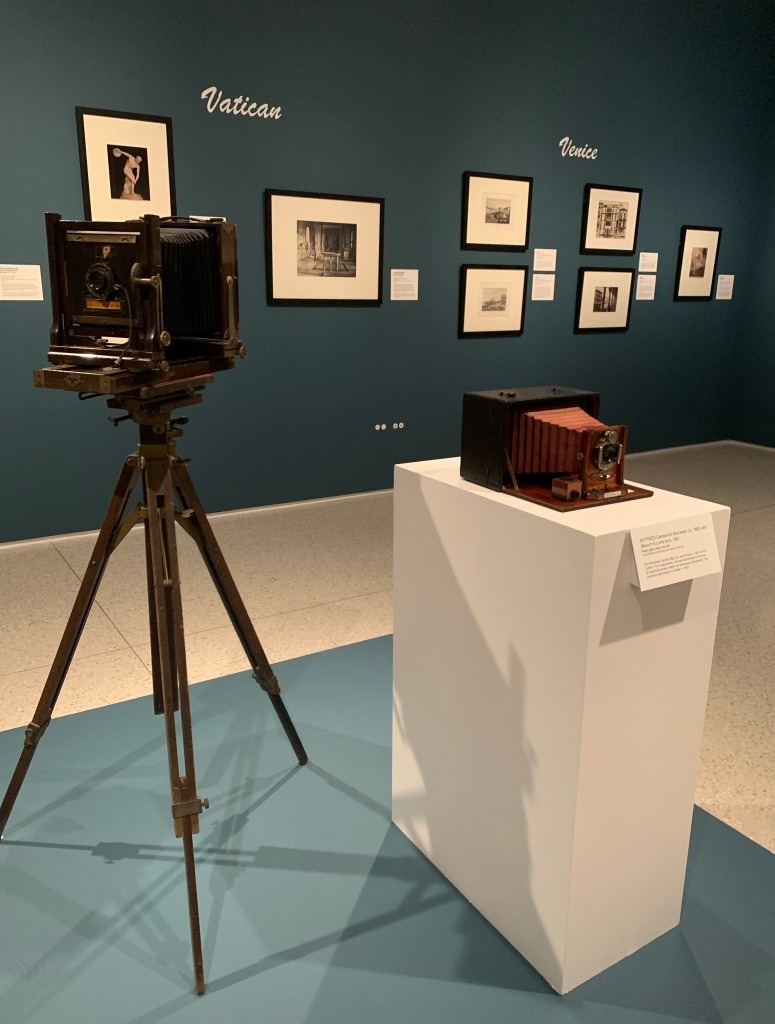
. . .
To help flesh out the idea of what it might be like to journey during this time, some traveling items have been incorporated into the installation. These include a woman’s traveling dress and a men’s hat and box. There is a steamer trunk with a rounded lid that prevented anything be stored on top if it, assuring that it would be the last on and first off of the train or boat. Also included is a delightful small case that features a writing desk upon one way of opening and a lady’s boudoir upon the other.
. . .
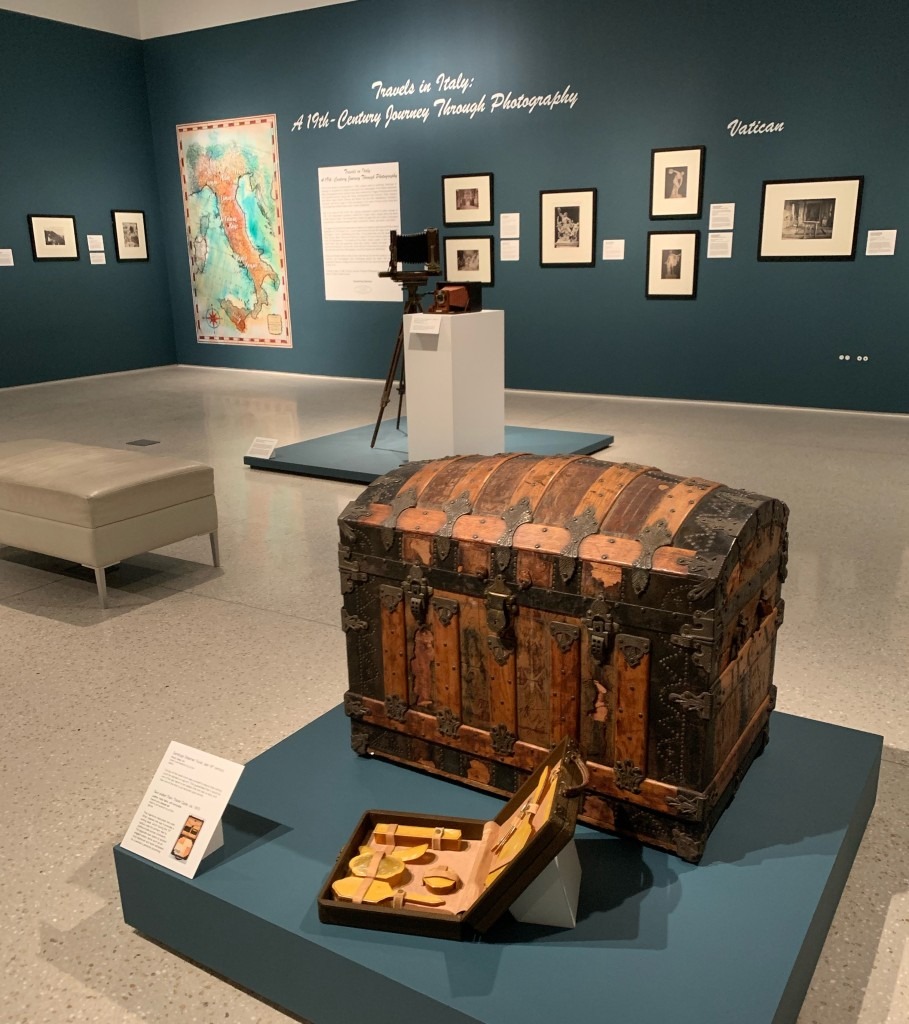
. . .
One of the delights of the exhibition is viewing photographs of famous historic sites and noting how even the ancient sites have changed in the last 150 years. One example is a photograph of The Pantheon in Rome, a building many people are at least somewhat familiar with. In the photograph by Francis Frith of around 1873 you will notice two bell towers. These were added in the 17th century by Pope Urban VIII to make it appear more like a Christian church. They were removed at the end of the 19th century and most people are not aware that they even existed at all.
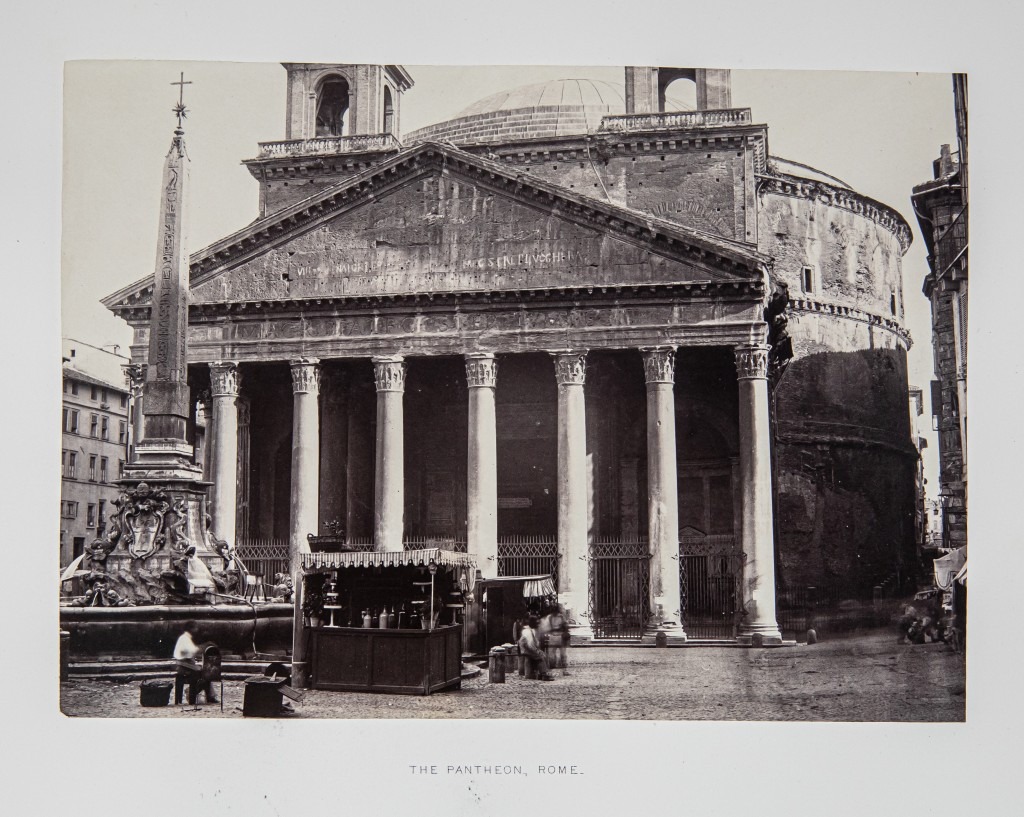
Another example is an interior view of Rome’s Colosseum also taken around 1873. The photograph shows a figure standing in the center of the structure. Anyone who has visited the site recently will recognize that the hypogeum (the labyrinth of rooms underneath the floor of the Colosseum) was still buried under 40 feet of dirt and rubble. While excavations had been attempted in the 19th century, it wasn’t until Benito Mussolini’s attempts to glorify Rome in the 1930s that they were finally unearthed.
These are just two examples. There are many, many more. Not to diminish the interest of seeing actual delicate albumen paper prints painstakingly created during this time.
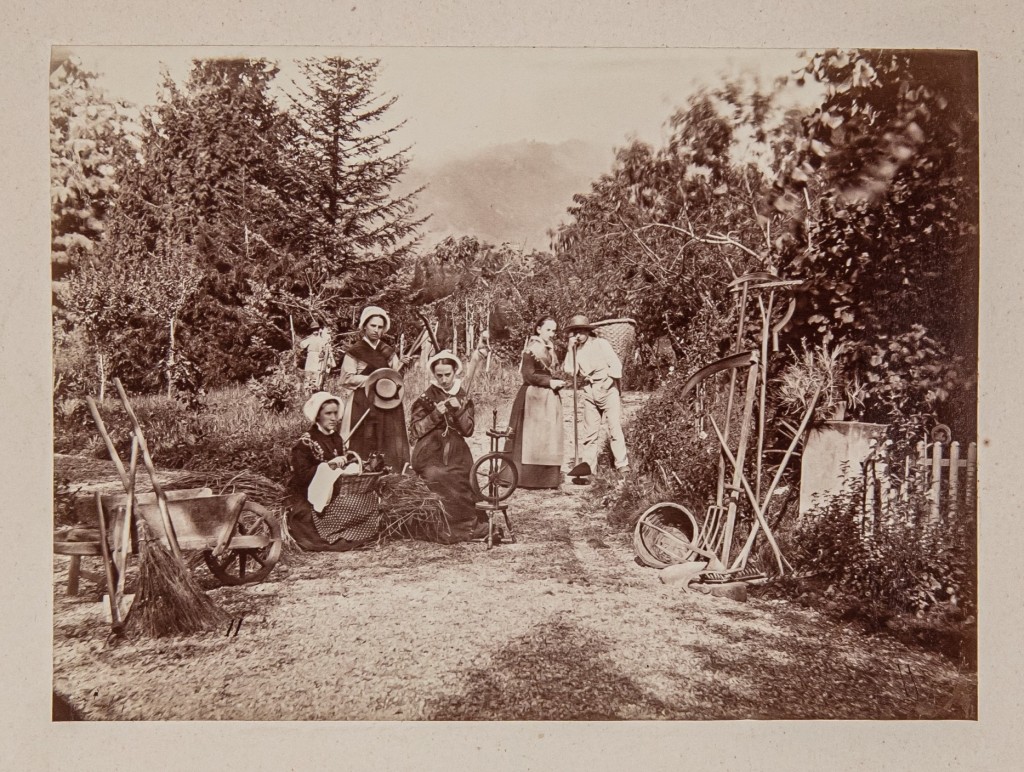
The exhibition will be on view through July 9. TMA has greatly expanded its gallery spaces and added wonderful educational classrooms. If you haven’t been lately, it is worth a visit, especially if you have an interest in Italy, ancient art, or photography in general. Most of these photographs have never been shown at the TMA, and may not be after this exhibition for a long, long time.
Don’t miss the rare salt print depicting the Bust of Emperor Lucius Verus from around 1845. You will know it because it has a cover over it, which you have to raise up to view the photograph. This is because it is so sensitive to light. It’s just one of the delights awaiting you.
. . .
tampamuseum.org/travels-in-italy
Installation photos
by Robin O’Dell

